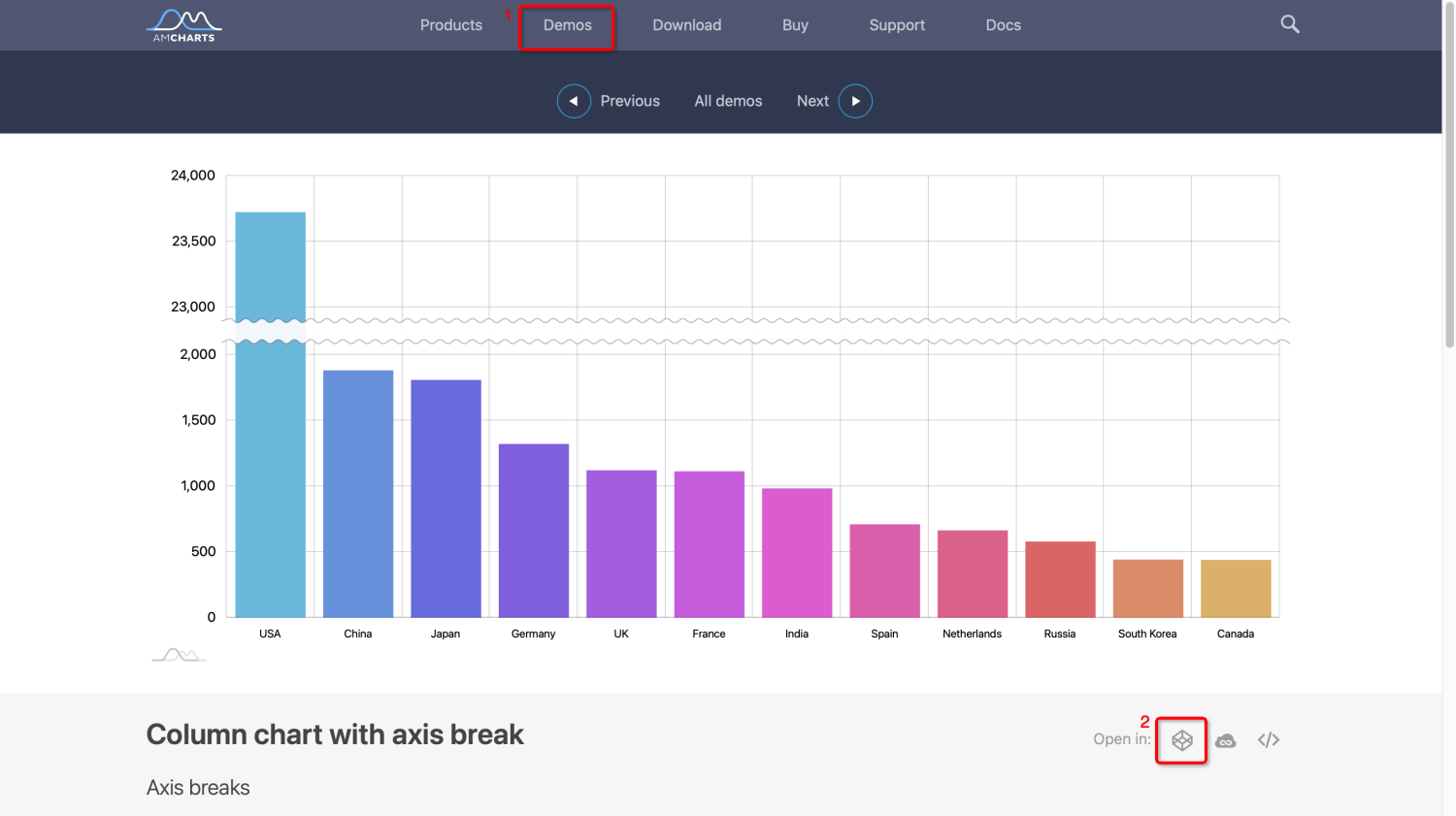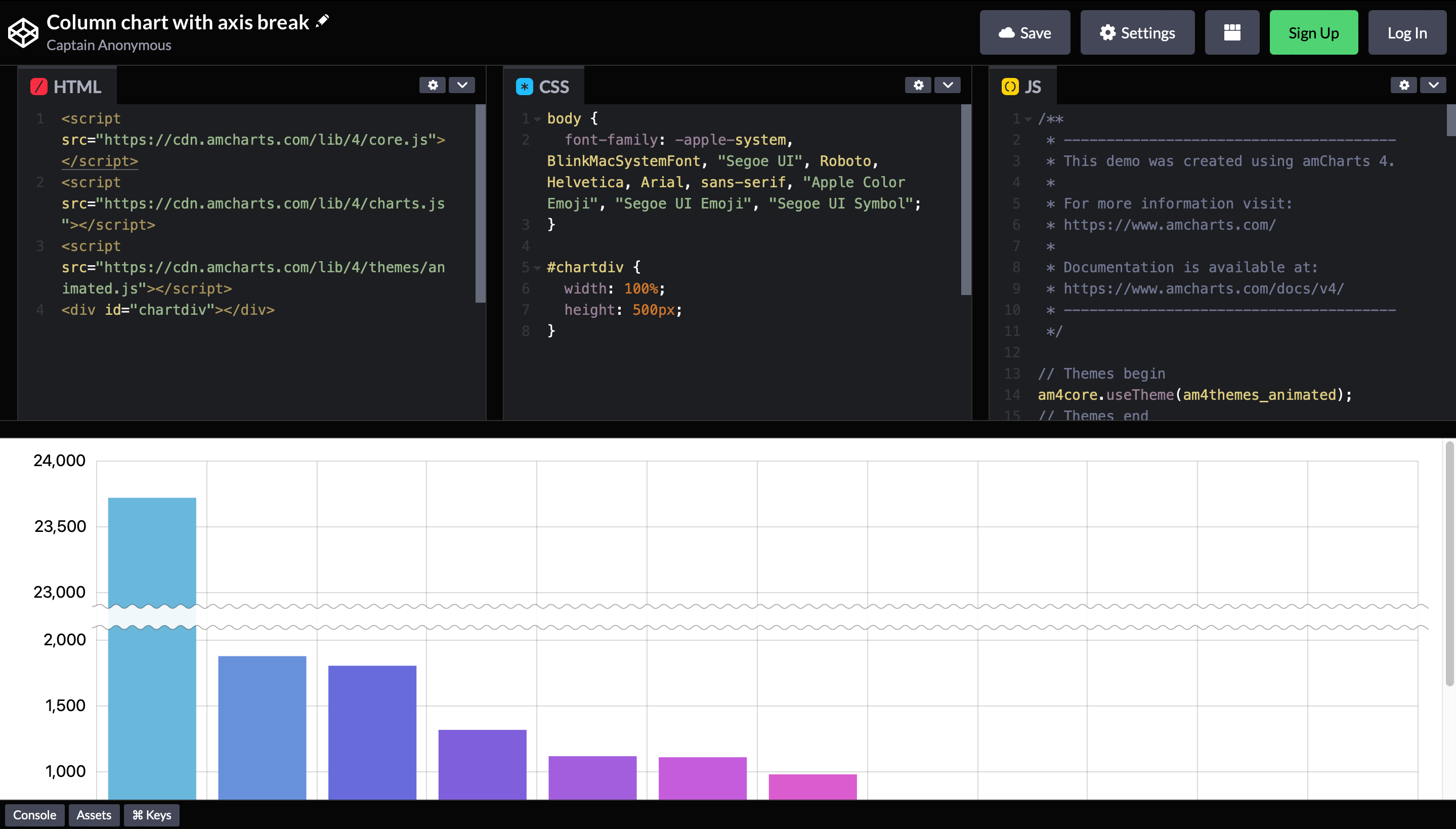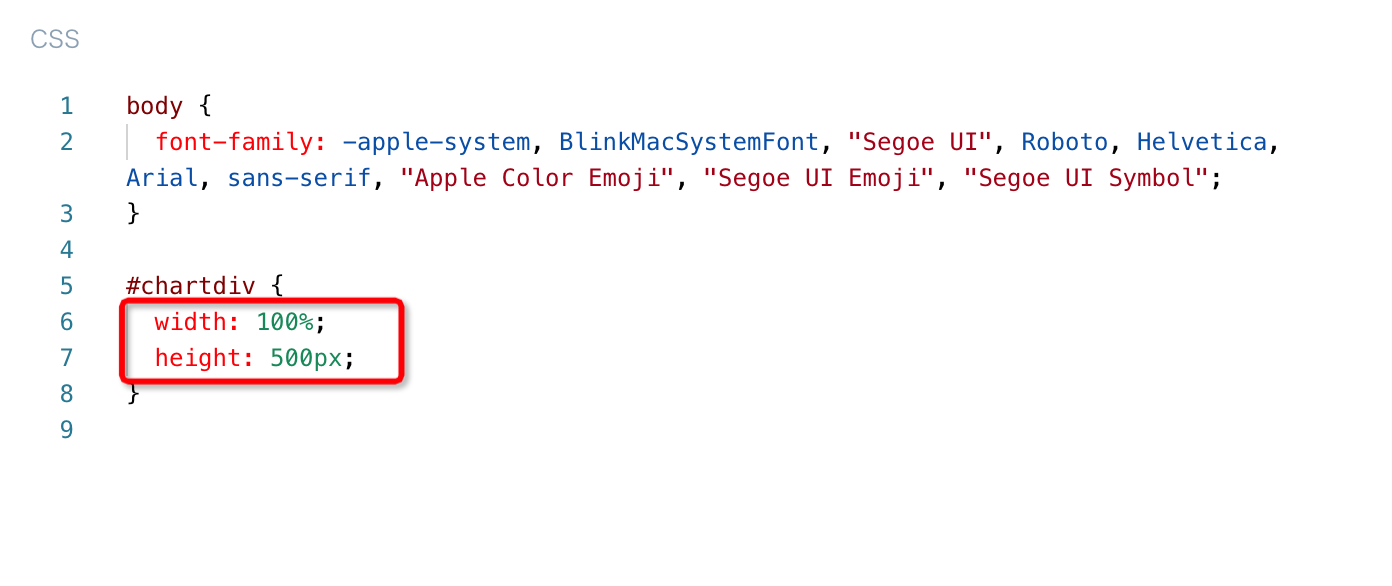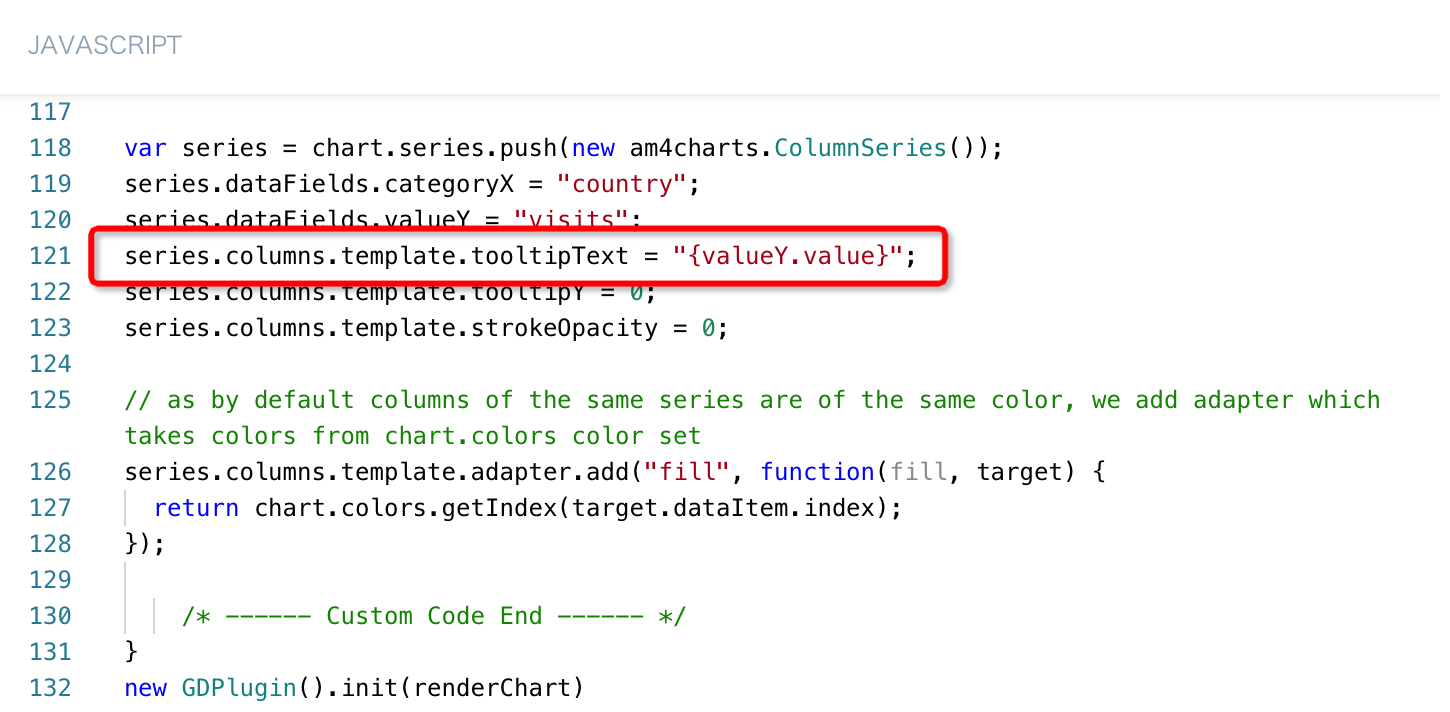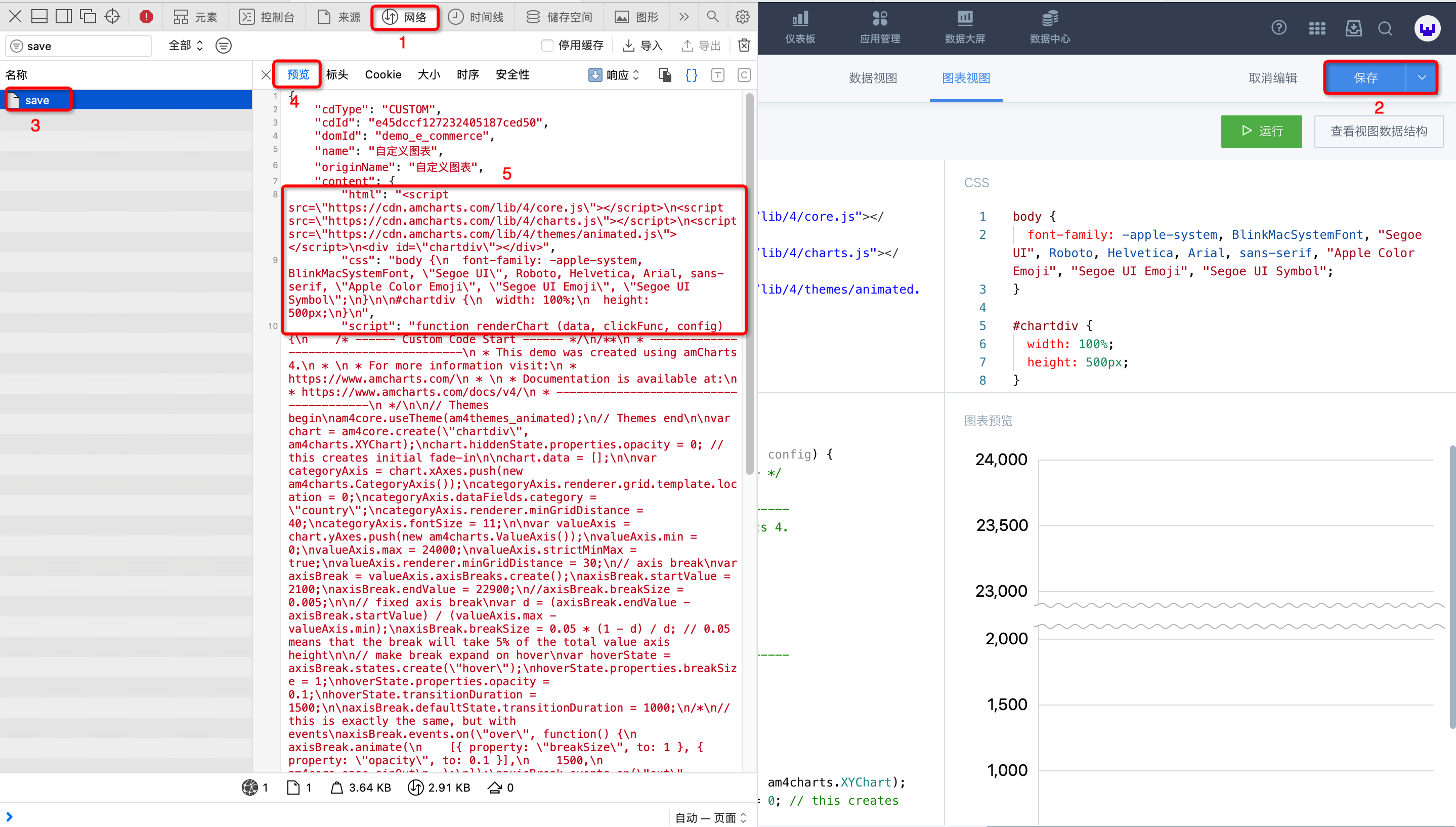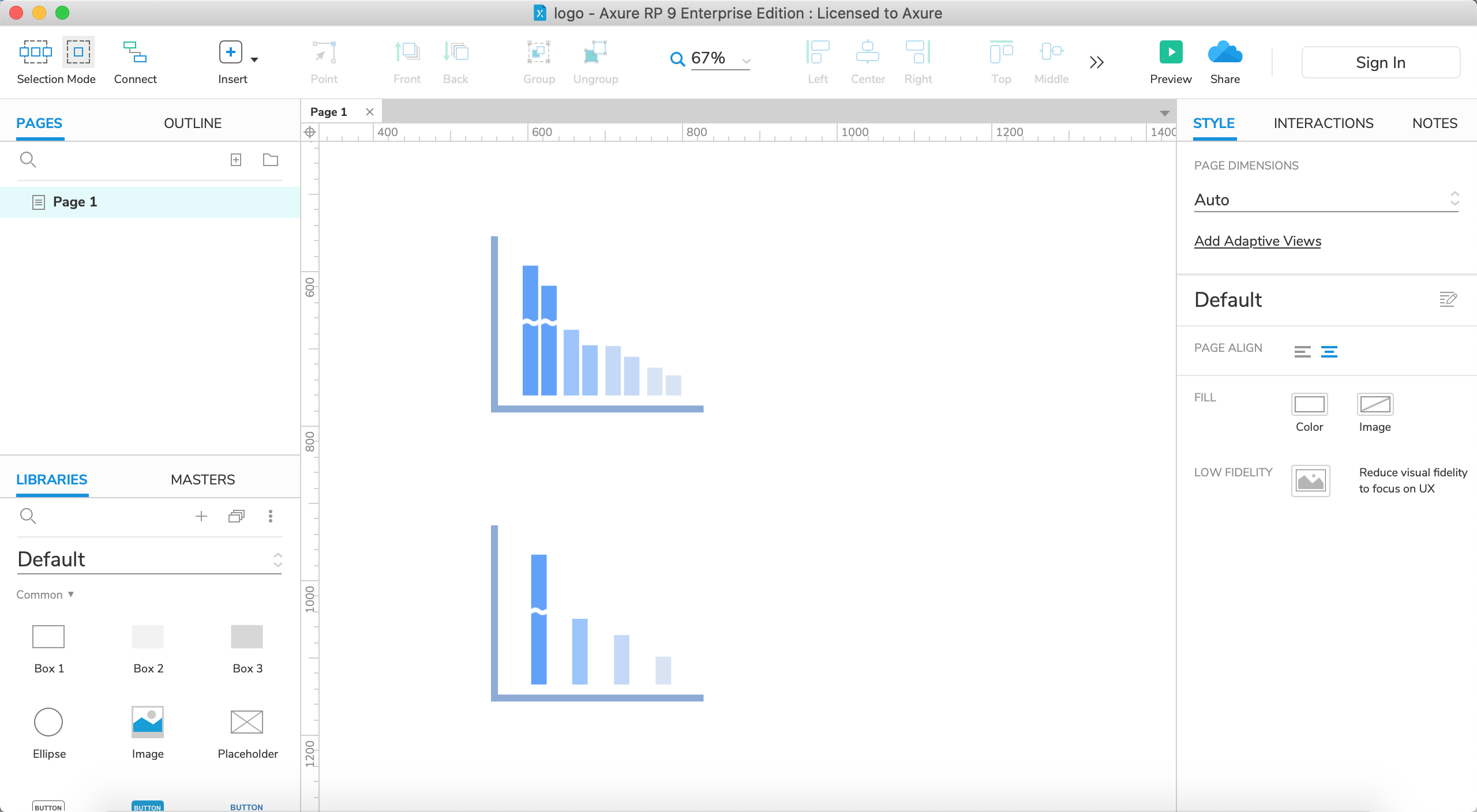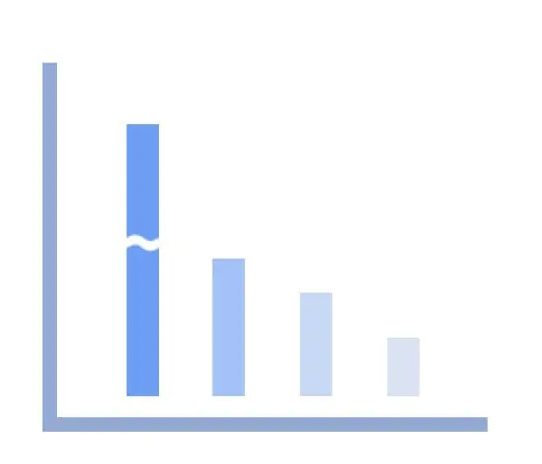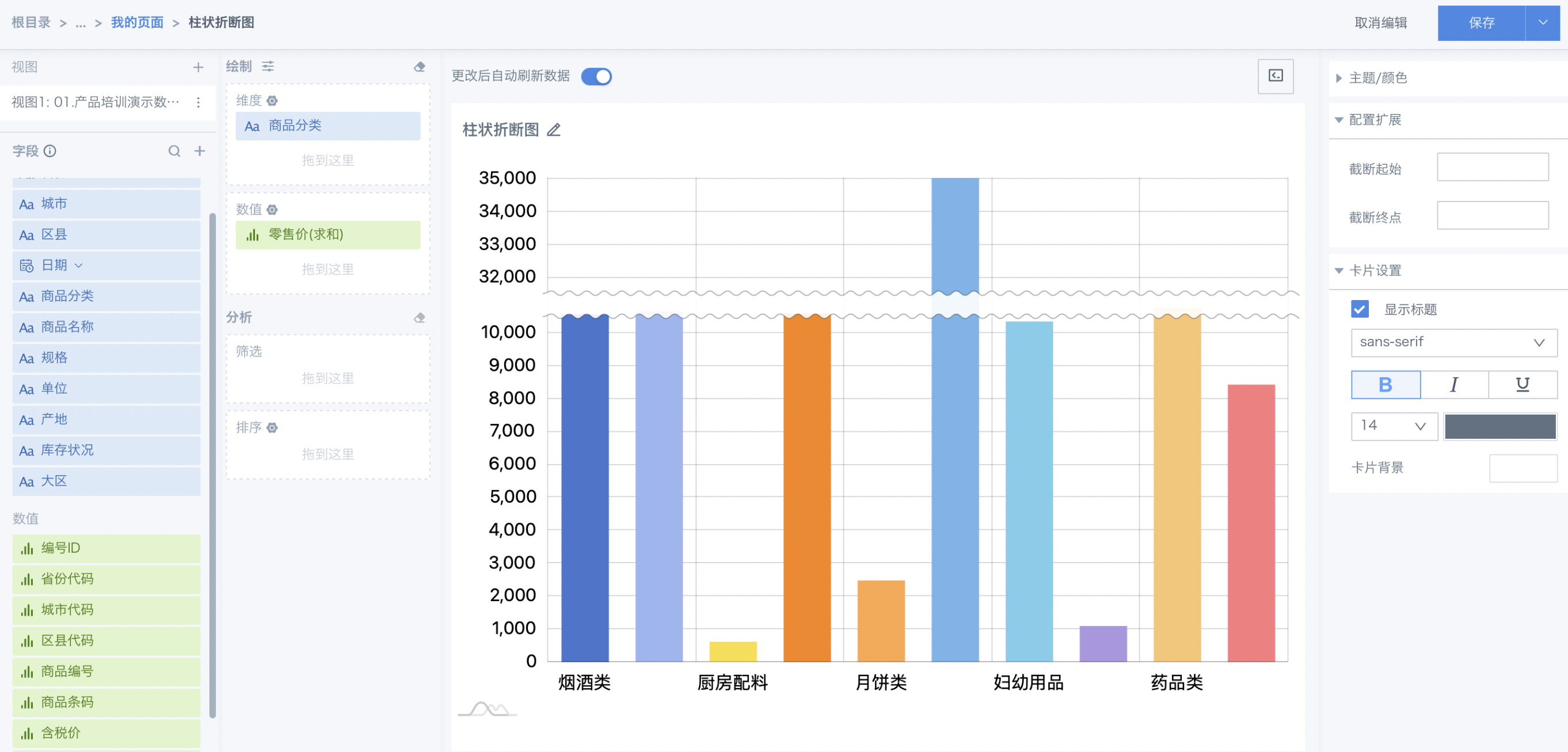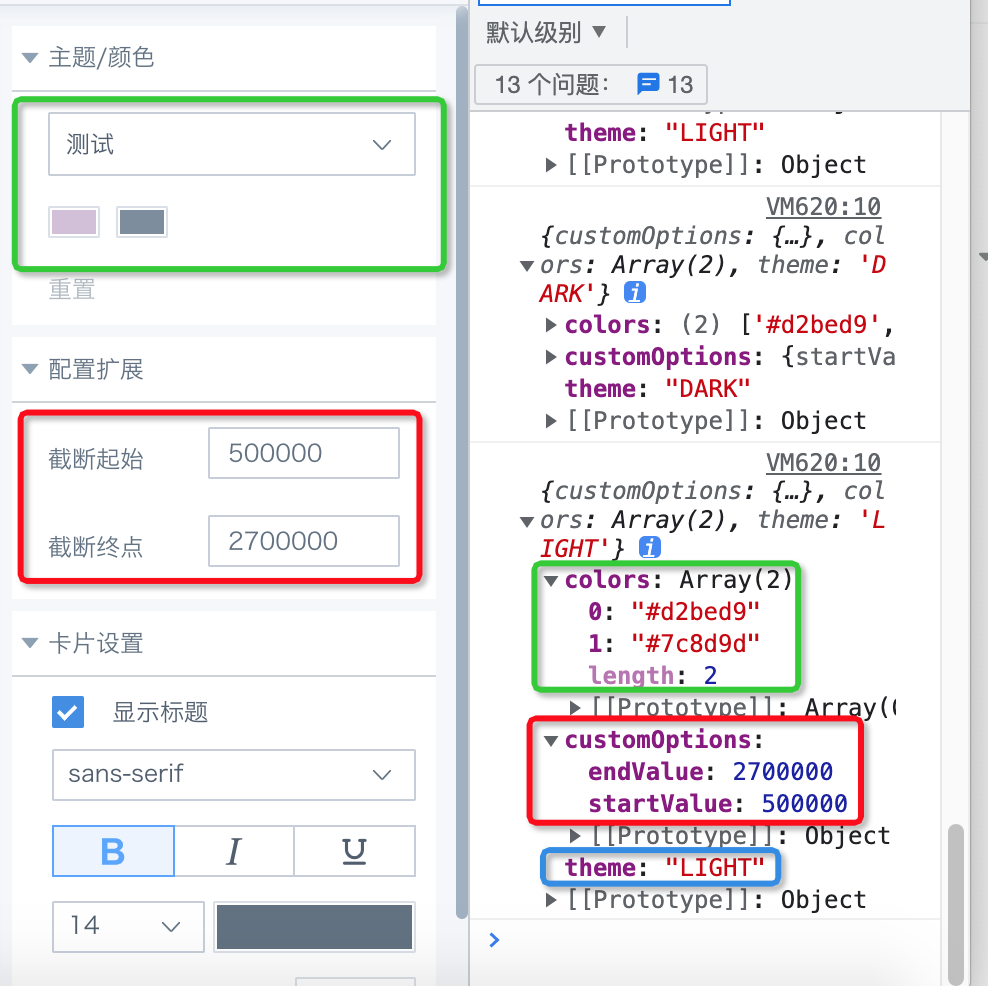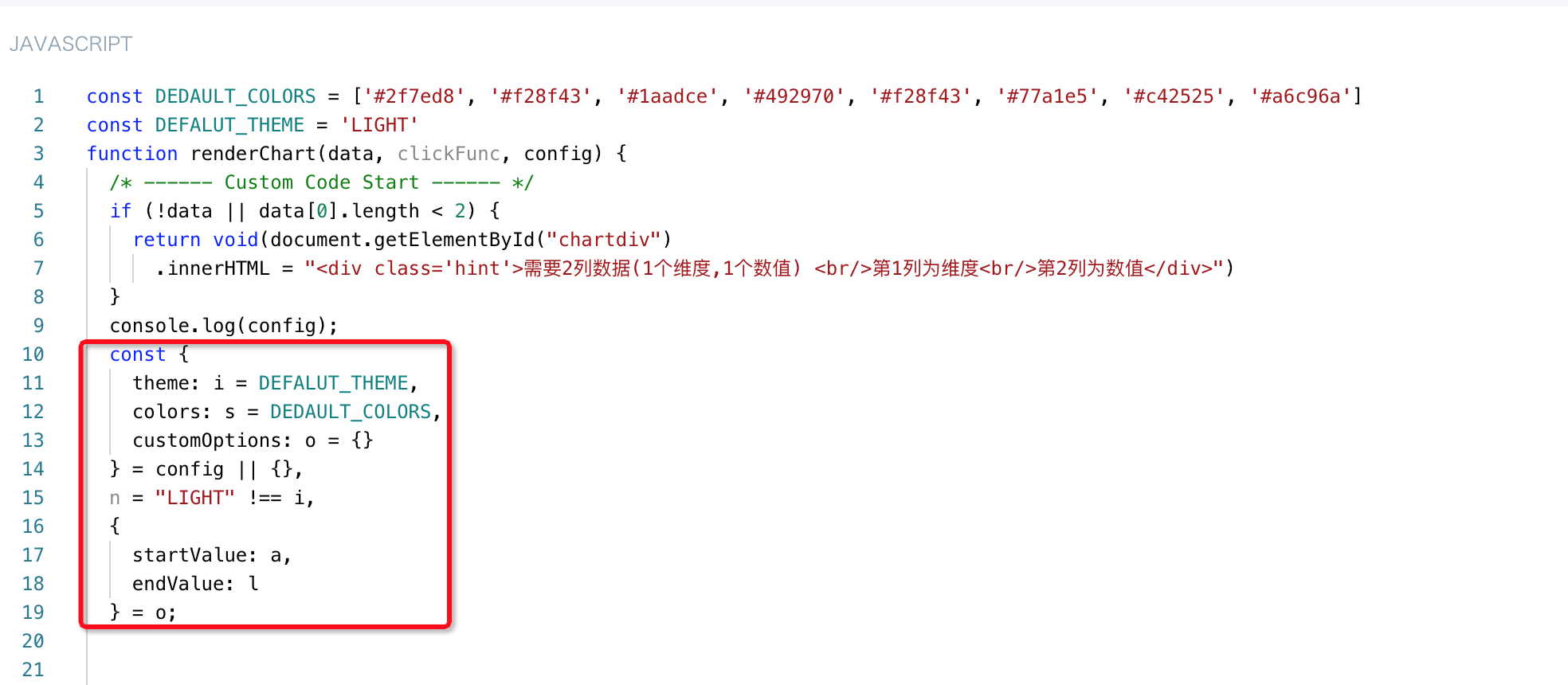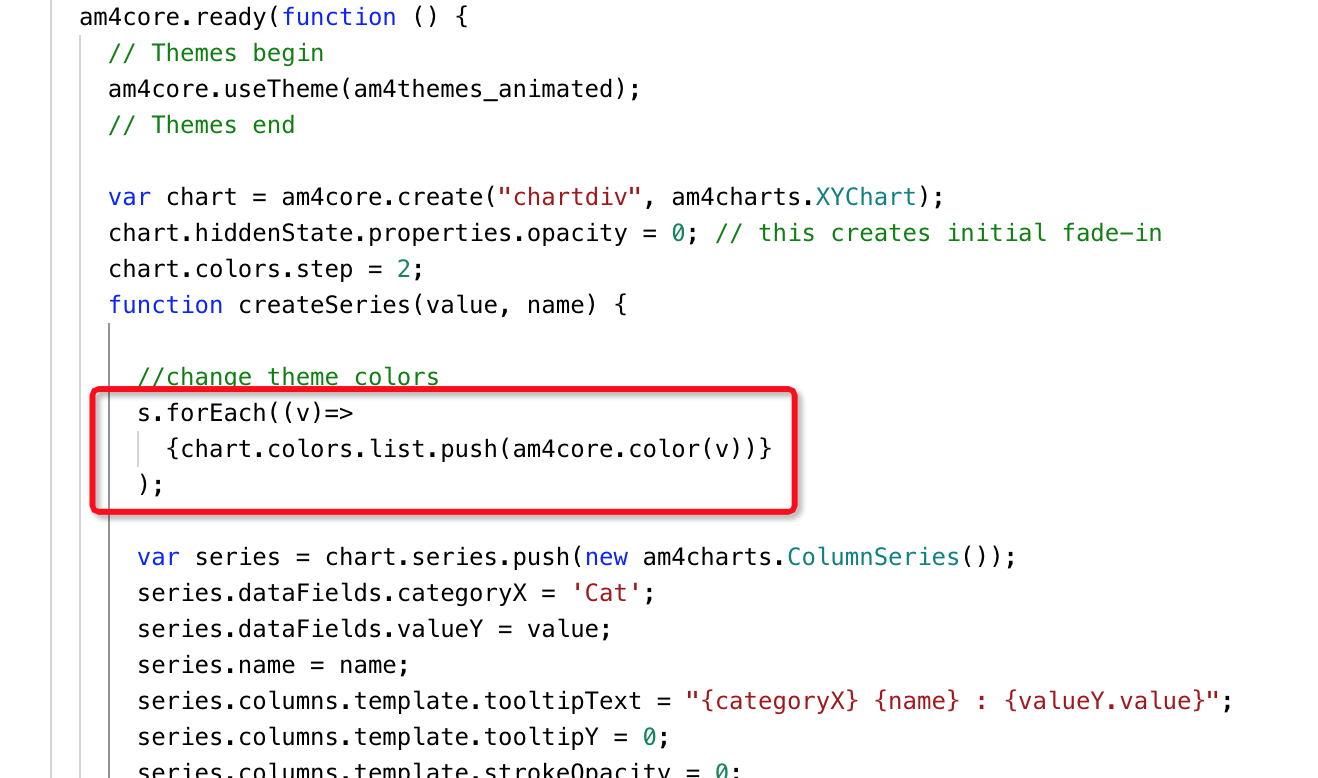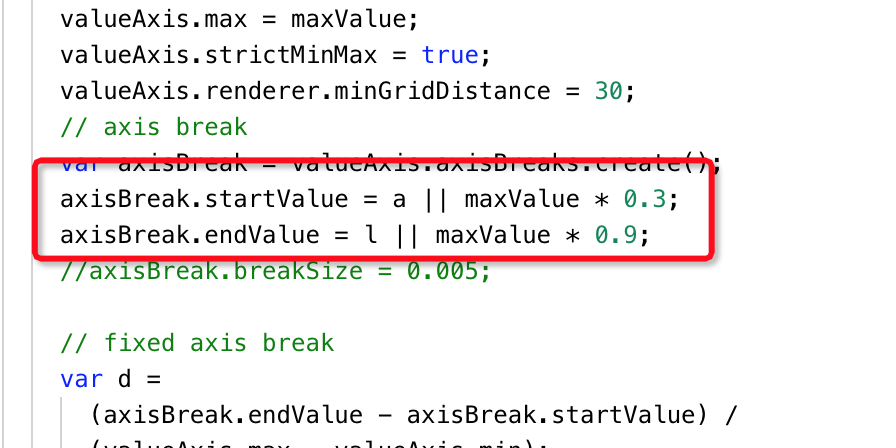Practical Cases
1. Overview
When building charts based on business scenarios, you may find that the standard charts provided by Guandata BI cannot meet your needs. At this time, you can use the custom chart function within Guandata BI to develop special charts to meet your requirements. If reuse is needed, for these created "special charts", we can encapsulate them as "visualization plugins" through some operation configurations, and then install them into BI.
This article will provide a detailed introduction to these operation configurations.
2. Usage Guide
The creation process of visualization plugins is generally divided into the following three steps:
-
Generate Custom Chart: Create personalized display styles through the custom chart function within the Guandata BI platform. For specific steps, please refer to [Custom Charts](../1-Custom Charts.md).
-
Generate Visualization Plugin: Generate visualization plugins in JSON file format according to the format content defined by Guandata BI. For specific steps, please refer to [Generate Visualization Plugin](2-Practical Cases.md#22-generate-visualization-plugin) below.
-
Encapsulate Chart Configuration Items: Design frontend interface configuration item display effects and encapsulate chart configuration items. This article will focus on this introduction.
2.1. Generate Custom Chart
Function Entry
Dashboard > Create New Card > Custom Chart.
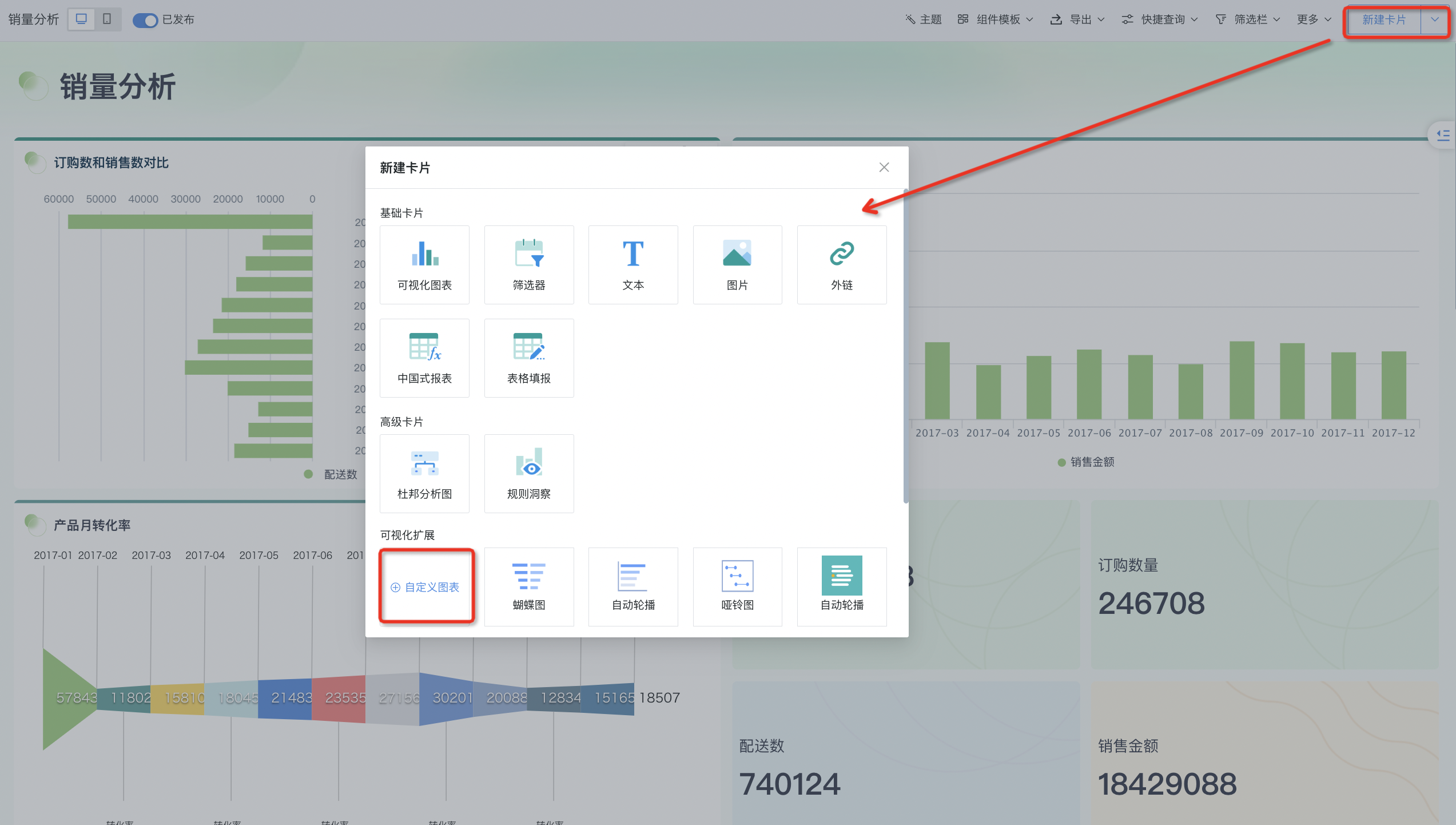
Editing Area
The editing area is divided into the following three parts:
-
Chart Library Reference and Container Definition (HTML): Mainly used to define the container for chart rendering and the chart library that needs to be referenced when rendering charts.
-
Main Style Settings (CSS): Static style settings. Generally, no additional modifications are needed. Container self-adaptation can be set here. For example, when referencing Amcharts charts, the default height of container "chartdiv" in CSS is 500px. You can modify it to 95% to achieve height self-adaptation of custom charts as card size adjusts.
-
Chart Rendering Logic (JAVASCRIPT): Chart data integration and how to render are defined here.
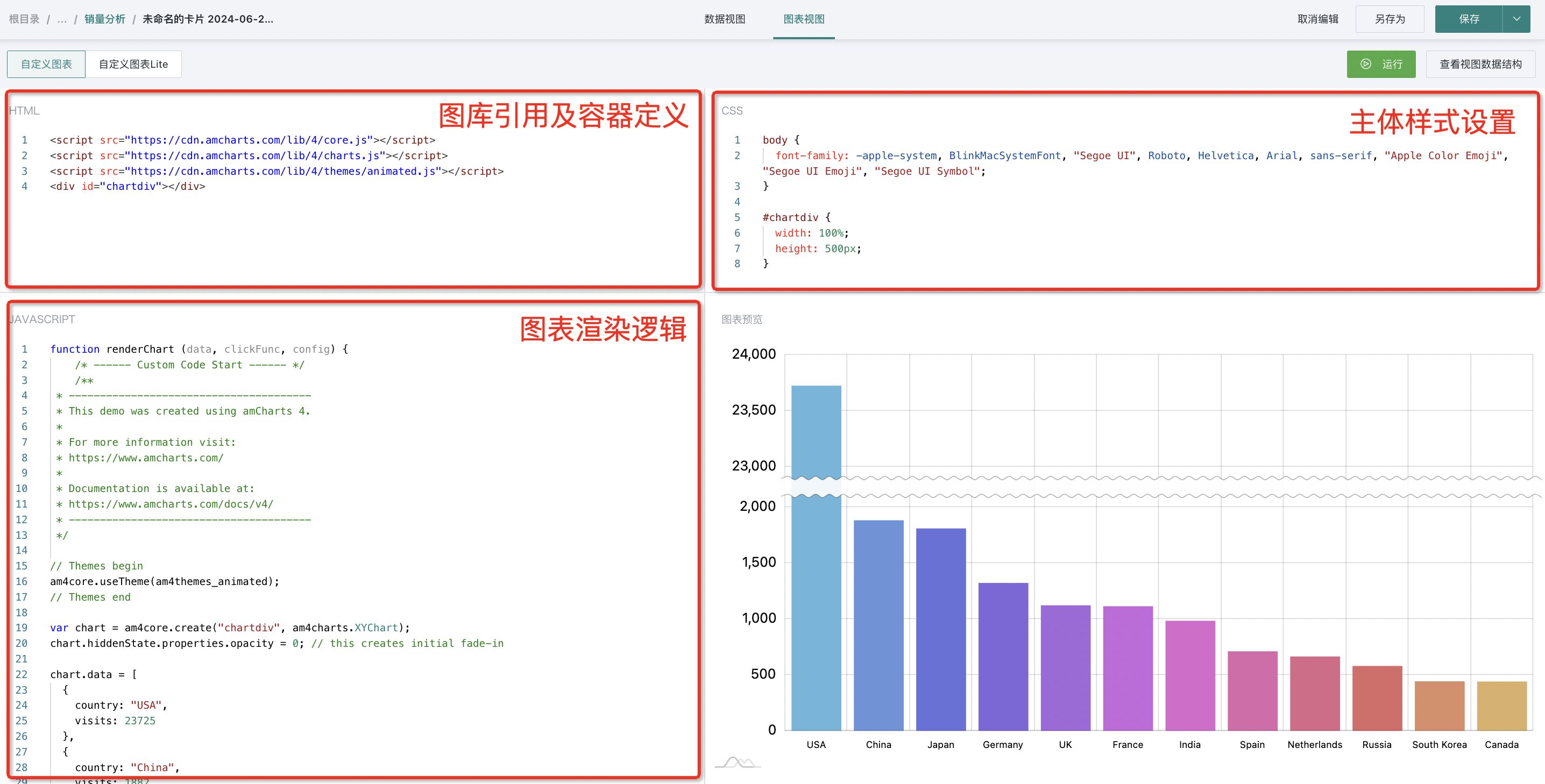
Drawing Example
Below we use Amcharts' column break chart as an example to illustrate how to generate custom charts.
Note: Amcharts is a chart component development and extension tool service provider, unrelated to Guandata BI products and services. It provides three chart components: JavaScript/HTML5 Charts, Javascript/HTML5 Stock Chart, and JavaScript Maps. If you need to use their products or services, please understand their product or service related pricing and other matters on your own.
Step1. Chart Copy
- First, we select the column break chart from Amcharts official website Demos, and after entering, choose to open in CodePen mode;
- In CodePen mode, copy the HTML, CSS, and JS content to the corresponding areas of Guandata custom chart;
-
Do not directly replace the content in the custom chart JAVASCRIPT with JS content. You need to paste it between "/* - - -- Custom Code Start - - -- /" and "/ - - -- Custom Code End - - -- */" under function renderChart
-
If it's an intranet environment, you also need to replace the chart library reference address in HTML with the intranet offline chart library address
After completing the above operations, the chart copy is completed.
Step2. Data Integration
Next, we need to integrate the data from Guandata BI into the custom chart for rendering.
1. Prepare data in "Data View".
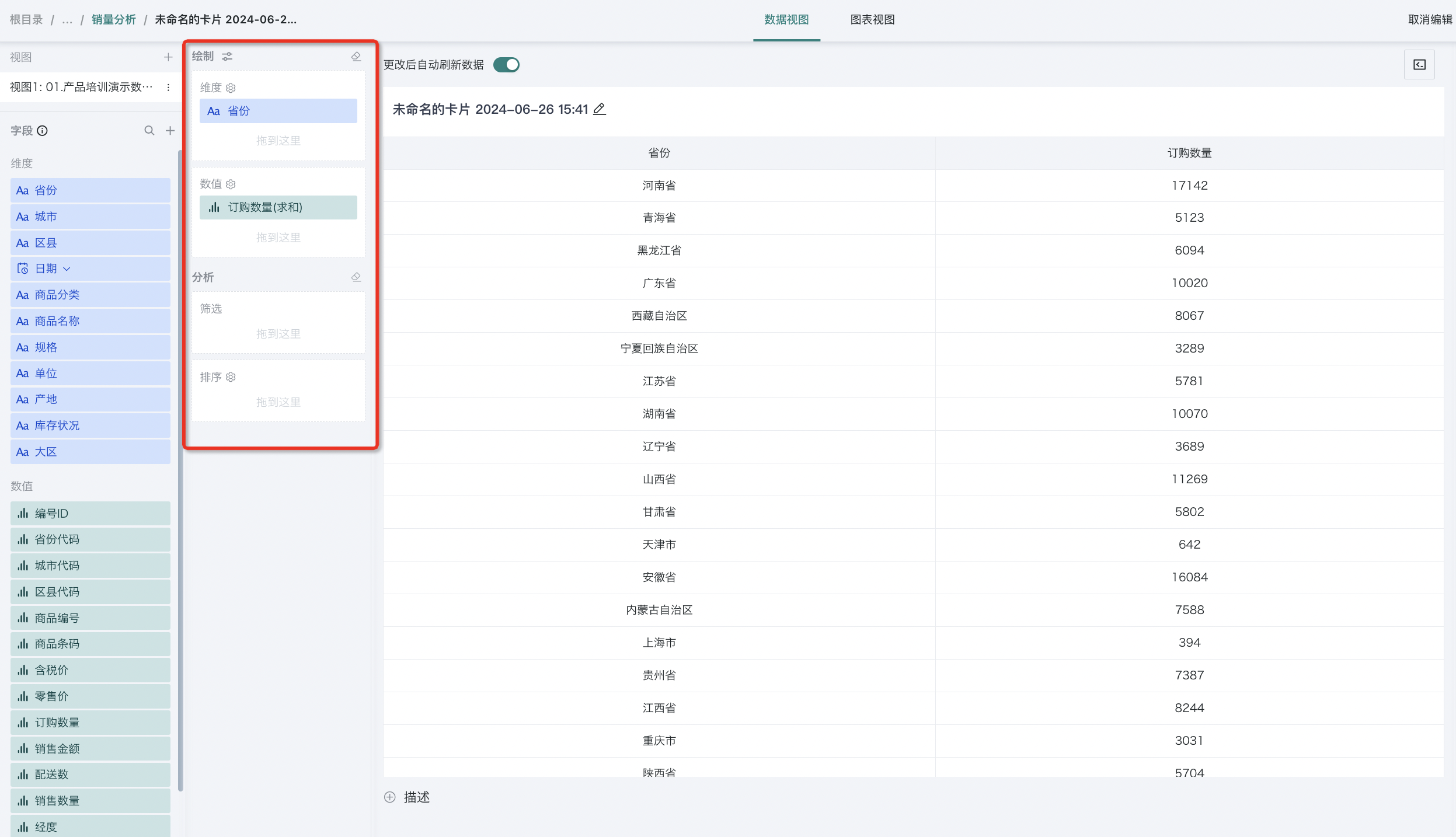
2. In "Chart View", you can preview the data passed from "Data View" through "View View Data Structure" in the upper right corner. The sample data provided in the Demo is as follows. We need to replace the data in the chart.data array with our prepared data.
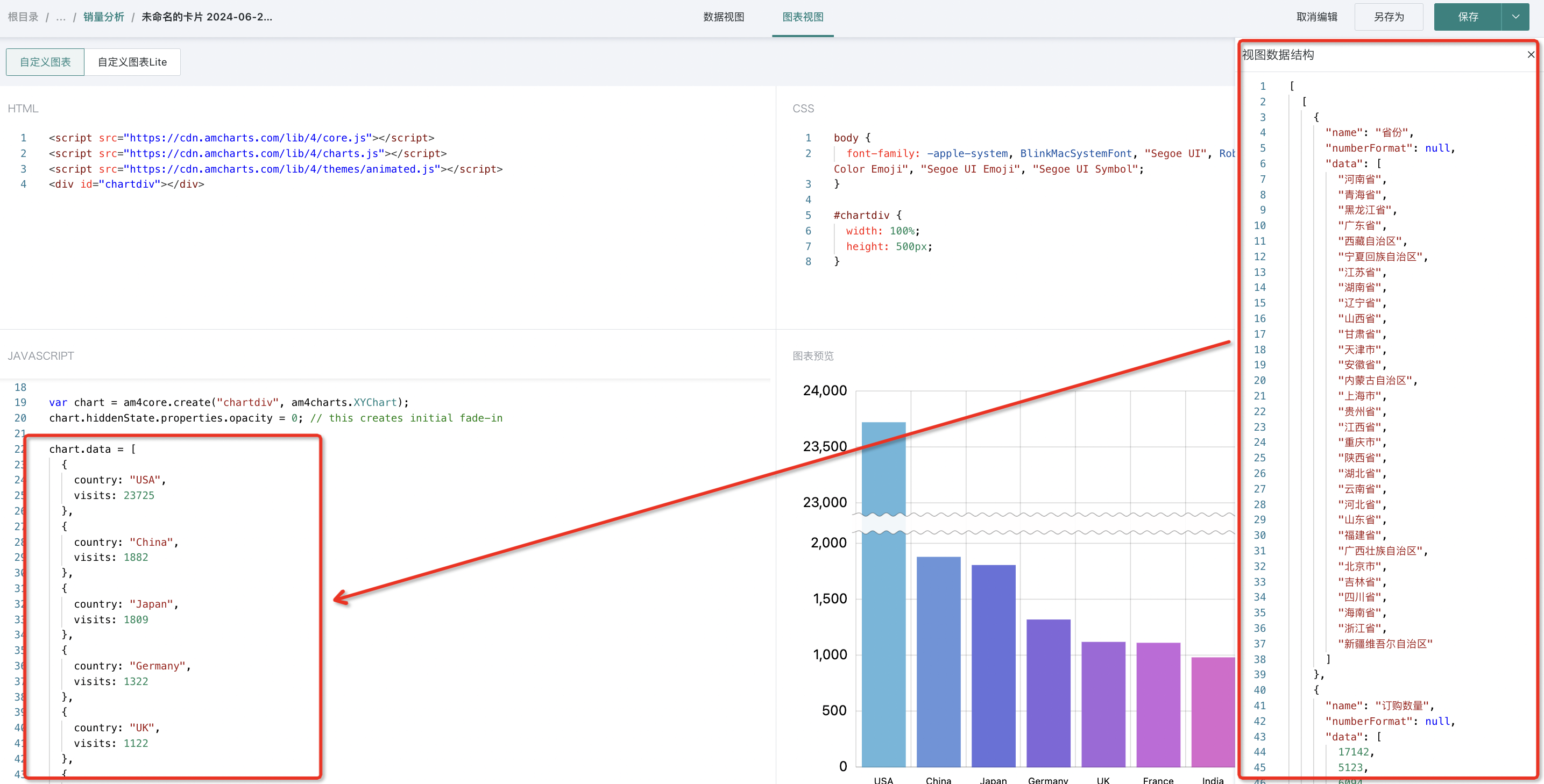
As shown in the figure below, pour the data from the BI system into chart.data.
At this point, we have completed the data integration.
Step3. Custom Modifications
Finally, you can customize and adjust different chart configuration items according to different chart library configuration modification tutorials.
- Chart style modification
- Set the display content of chart tooltips
2.2 Generate Visualization Plugin
After creating a custom chart, for convenience of reuse, we can encapsulate it as a visualization plugin.
File Format
Visualization plugins are JSON files stored in an agreed format, as follows:
- Visualization Plugin JSON File Template
{
"name": "", //Visualization plugin name, customizable
"version": "", //Visualization plugin template, customizable
"author": "", //Visualization plugin author, customizable
"description": "", //Visualization plugin description, customizable
"logo": "", //Visualization plugin icon, base64 format
"css": "", //Same as custom chart
"html": "", //Same as custom chart
"subType": "PLUGIN", //Type is plugin, no need to modify
"libs": [], //Reference js dependencies
"script": "" //Same as custom chart
}
- Visualization Plugin JSON File Example
{
"name": "Column Break Chart",
"version": "V1.0",
"author": "Guandata > wangping",
"description": "Clustered Column Break Chart",
"logo": "data:image/jpeg;base64,/9j/4AAQSkZJRgABAQAASABIAAD/....../gAooooAKKKKACiiigAooooA//Z",
"css": "body {\n font-family: -apple-system, BlinkMacSystemFont, \"Segoe UI\", Roboto, Helvetica, Arial, sans-serif, \"Apple Color Emoji\", \"Segoe UI Emoji\", \"Segoe UI Symbol\";\n}\n\n#chartdiv {\n width: 100%;\n height: 95%;\n}\n\n#container table {\n border-collapse: collapse;\n border-color: #E4E7F0;\n}\n\n#container table th {\n padding: 4px 0;\n}\n\n#container table td {\n min-width: 120px;\n padding: 4px 0;\n text-align: center;\n}\n",
"html": "\n\n\n",
"subType": "PLUGIN",
"libs": [],
"script": "function renderChart(data, clickFunc, config) {\n /* - - -- Custom Code Start - - -- */\n\n am4core.ready(function () {\n // Themes begin\n am4core.useTheme(am4themes_animated);\n // Themes end\n\n var chart = am4core.create(\"chartdiv\", am4charts.XYChart);\n chart.hiddenState.properties.opacity = 0; // this creates initial fade-in\n chart.colors.step = 2;\n function createSeries(value, name) {\n var series = chart.series.push(new am4charts.ColumnSeries());\n series.dataFields.categoryX = 'Cat';\n series.dataFields.valueY = value;\n series.name = name;\n series.columns.template.tooltipText = \"{categoryX} {name} : {valueY.value}\";\n series.columns.template.tooltipY = 0;\n series.columns.template.strokeOpacity = 0;\n \n // as by default columns of the same series are of the same color, we add adapter which takes colors from chart.colors color set\n series.columns.template.adapter.add(\"fill\", function (fill, target) {\n return chart.colors.getIndex(target.dataItem.index);\n });\n \n return series;\n }\n chart.data = [];\n data[0][0].data.forEach((v,i) => chart.data.push({\"Cat\":v,\"Value1\": data[0][1].data[i]}));\n\n let index;\n ValueList = [];\n for(index in chart.data) {\n ValueList.push(chart.data[index].Value1)\n\n }\n maxValue = Math.ceil(Math.max.apply(null,ValueList));\n console.log(maxValue);\n/*\n chart.data = [\n {\n country: \"USA\",\n visits: 23725,\n data1: 12340,\n },\n {\n country: \"China\",\n visits: 1882,\n data1: 1230,\n },\n {\n country: \"Japan\",\n visits: 1809,\n data1: 1230,\n }\n ];\n */\n // var categoryAxis = chart.xAxes.push(new am4charts.CategoryAxis());\n // categoryAxis.renderer.grid.template.location = 0;\n // categoryAxis.dataFields.category = \"country\";\n // categoryAxis.renderer.minGridDistance = 40;\n // categoryAxis.fontSize = 11;\n\n var xAxis = chart.xAxes.push(new am4charts.CategoryAxis())\n xAxis.dataFields.category = 'Cat'\n xAxis.renderer.cellStartLocation = 0.1\n xAxis.renderer.cellEndLocation = 0.9\n xAxis.renderer.grid.template.location = 0;\n\n\n var valueAxis = chart.yAxes.push(new am4charts.ValueAxis());\n valueAxis.min = 0;\n valueAxis.max = maxValue;\n valueAxis.strictMinMax = true;\n valueAxis.renderer.minGridDistance = 30;\n // axis break\n var axisBreak = valueAxis.axisBreaks.create();\n axisBreak.startValue = maxValue * 0.3;\n axisBreak.endValue = maxValue * 0.9;\n //axisBreak.breakSize = 0.005;\n\n // fixed axis break\n var d =\n (axisBreak.endValue - axisBreak.startValue) /\n (valueAxis.max - valueAxis.min);\n axisBreak.breakSize = (0.05 * (1 - d)) / d; // 0.05 means that the break will take 5% of the total value axis height\n\n // make break expand on hover\n var hoverState = axisBreak.states.create(\"hover\");\n hoverState.properties.breakSize = 1;\n hoverState.properties.opacity = 0.1;\n hoverState.transitionDuration = 1500;\n\n axisBreak.defaultState.transitionDuration = 1000;\n createSeries('Value1', 'Value1');\n }); // end am4core.ready()\n\n /* - - -- Custom Code End - - -- */\n}\nnew GDPlugin().init(renderChart);\n"
}
Custom Chart Content Reference
Get custom chart content through the interface return information in Chrome browser console.
Specific Operation: 【F12/Right-click and select "Inspect" to open console】 --> 【Switch to "Network" tab】 --> 【Click "Save" in custom chart editing interface】 --> 【Select "save" interface from interface list】 --> 【Select "Preview" tab】 --> 【Copy content under html, css and script in content】 --> 【Paste to corresponding areas in visualization plugin JSON file】
Logo Generation and Conversion
1. Download from the internet (recommended: https://www.iconfont.cn/) or make your own (recommended: Axure RP9 tool) a Logo icon.
- To adapt to Guandata's two different color themes, you need to replace the solid color background of the made icon with a transparent background. You can use tools like Meitu Xiuxiu to achieve the desired effect.
-
After replacing with transparent background, convert the Logo image to Base64 format encoding (recommended https://c.runoob.com/front-end/59/).
-
Finally, paste the converted Base64 encoding into the corresponding area of the visualization plugin JSON file to generate the visualization plugin.
Visualization Plugin Installation and Application
After the above steps, our visualization plugin is built. Next, we need to import the visualization plugin into the Guandata BI platform.
- In the dashboard, click "Create New Card", scroll the popup to the bottom, and click "Install Plugin". Select the previously generated visualization plugin JSON file, and the plugin will be imported and installed. The new plugin will appear at the end of the current card list.
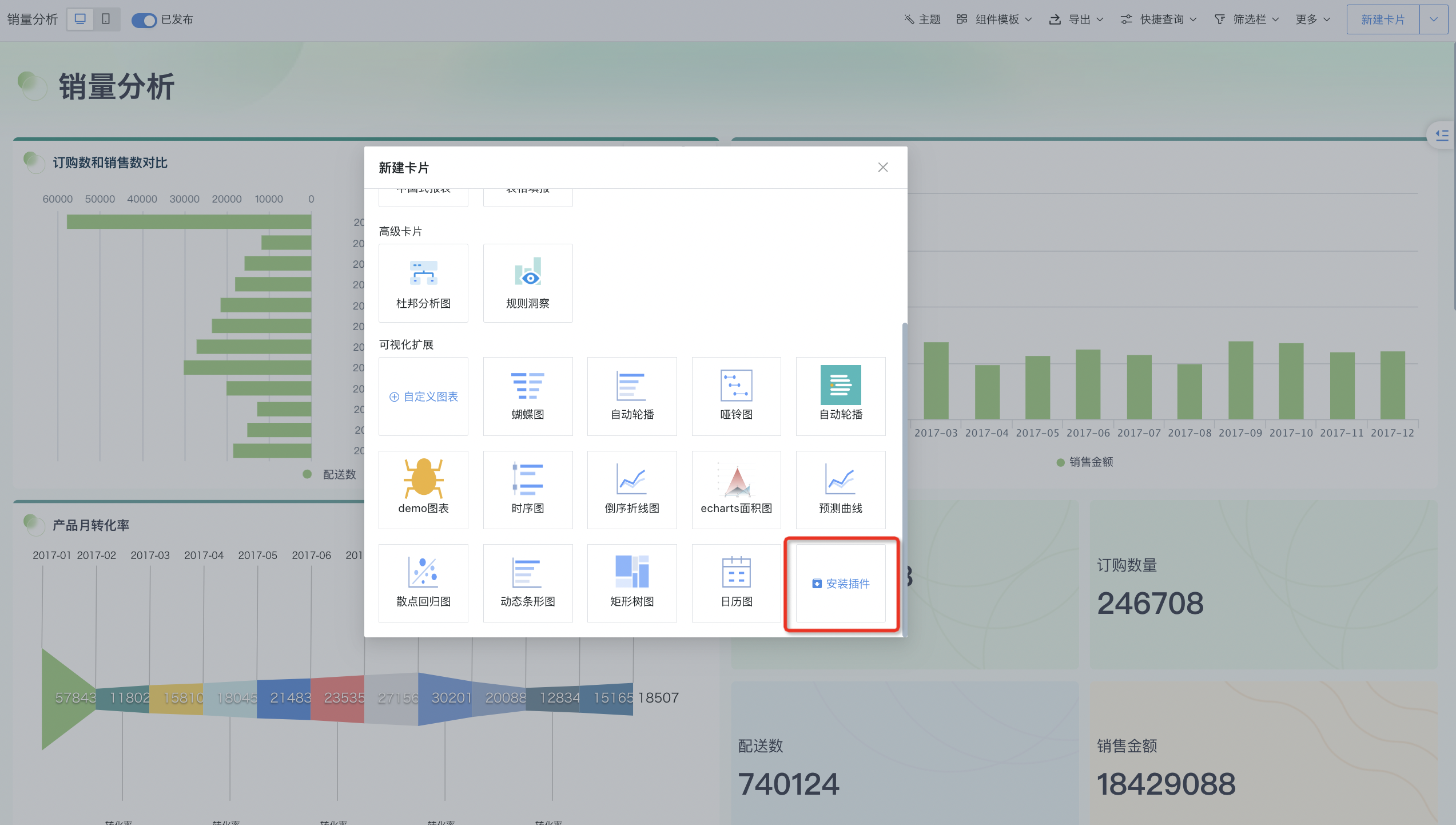
2. Click on the plugin, like an ordinary card, select an analysis dataset, and after entering the card editing interface, drag data according to the interface instructions to complete the visualization display.
2.3 Encapsulate Chart Configuration Items
In the above, we introduced how to generate visualization plugins, and through installing and applying these plugins, we can quickly achieve the desired visualization effects. However, this implementation method still has certain limitations. For example, the interface lacks the ability to directly customize chart configuration items, which means that when we want to modify colors, label display, and legend styles, we need to go back to the JSON file for code modification, and then update the plugin.
To solve this problem, we need to create interfaces for some commonly used configuration items and apply them during rendering.
Chart Configuration Item Creation
The built-in rendering component types are as follows:
-
STRING // Text input box
-
SELECT // Dropdown selector
-
NUMBER // Number input box
-
BOOLEAN // Switch toggle
-
DIVIDER // Divider line (for beautification)
-
MODEL // Flexible Model definition
-
GROUP // Group
If you want to display interface creation and chart configuration items, you need to add "chartConfigurations" to the visualization plugin JSON file. The content template in "chartConfigurations" is as follows:
- Visualization Plugin JSON File Template Adding "chartConfigurations"
{
"name": "", //Visualization plugin name, customizable
"version": "", //Visualization plugin template, customizable
"author": "", //Visualization plugin author, customizable
"description": "", //Visualization plugin description, customizable
"logo": "", //Visualization plugin icon, base64 format
"css": "", //Same as custom chart
"html": "", //Same as custom chart
"subType": "PLUGIN", //Type is plugin, no need to modify
"libs": [], //Reference js dependencies
"script": "" //Same as custom chart
"chartConfigurations": [
{
"fieldName": "", //Required, component name, as the name passed in config when drawing chart
"label": "", //Required, frontend interface display name
"type": "", //Required, rendering component type
"defaultValue": "", //Optional, default value
"dependsOnMap": {}, //Optional, dependencies
/*
Example
"dependsOnMap": {
"Configuration item fieldName1": [ true ]
},
*/
"model": {} //Optional, model
/*
Example
"model": {
"modelType": "SELECT",
"labels": [ "Data label outside", "Internal center" ],
"values": [ "outside", "center" ],
"size": "small"
}
*/
},
{
Configuration item 2
},
...
]
}
Taking the column break chart mentioned above as an example, we add chartConfigurations to the visualization plugin JSON file and build two configuration items "startValue" and "endValue" to define the start and end values of the break interval. As shown below:
- Visualization Plugin JSON File Template Adding "chartConfigurations" Example
{
"name": "Column Break Chart",
"version": "V1.1",
"author": "Guandata > wangping",
"description": "Clustered Column Break Chart",
"logo": "data:image/png;base64,iVBORw0KGgoAAAANSU....../g+iCTPPrp+uQAAAAABJRU5ErkJggg==",
"css": "body {\n font-family: -apple-system, BlinkMacSystemFont, \"Segoe UI\", Roboto, Helvetica, Arial, sans-serif, \"Apple Color Emoji\", \"Segoe UI Emoji\", \"Segoe UI Symbol\";\n}\n\n#chartdiv {\n width: 100%;\n height: 95%;\n}\n\n#container table {\n border-collapse: collapse;\n border-color: #E4E7F0;\n}\n\n#container table th {\n padding: 4px 0;\n}\n\n#container table td {\n min-width: 120px;\n padding: 4px 0;\n text-align: center;\n}\n",
"html": "\n\n\n",
"subType": "PLUGIN",
"libs": [],
"chartConfigurations":[{"fieldName":"startValue","label":"Break Start","type":"NUMBER","model":{"size":"small"}},{"fieldName":"endValue","label":"Break End","type":"NUMBER","model":{"size":"small"}}],
"script": "const DEDAULT_COLORS = ['#2f7ed8', '#f28f43', '#1aadce', '#492970', '#f28f43', '#77a1e5', '#c42525', '#a6c96a']\nconst DEFALUT_THEME = 'LIGHT'\nfunction renderChart(data, clickFunc, config) {\n /* - - -- Custom Code Start - - -- */\n if (!data || data[0].length < 2) {\n\t\treturn void(document.getElementById(\"chartdiv\")\n\t\t\t.innerHTML = \"Need 2 columns of data (1 dimension, 1 value) \nColumn 1 is dimension\nColumn 2 is value\")\n\t}\n const {\n\t\ttheme: i = DEFALUT_THEME,\n\t\tcolors: s = DEDAULT_COLORS,\n\t\tcustomOptions: o = {}\n\t} = config || {}, n = \"LIGHT\" !== i, {\n\t\tstartValue: a,\n\t\tendValue: l\n\t} = o;\n\n\n am4core.ready(function () {\n // Themes begin\n am4core.useTheme(am4themes_animated);\n // Themes end\n\n var chart = am4core.create(\"chartdiv\", am4charts.XYChart);\n chart.hiddenState.properties.opacity = 0; // this creates initial fade-in\n chart.colors.step = 2;\n function createSeries(value, name) {\n\n//change theme colors\n s.forEach((v)=> {\n {chart.colors.list.push(am4core.color(v))}\n });\n\nconsole.log(am4core.color(s[0]));\n var series = chart.series.push(new am4charts.ColumnSeries());\n series.dataFields.categoryX = 'Cat';\n series.dataFields.valueY = value;\n series.name = name;\n series.columns.template.tooltipText = \"{categoryX} {name} : {valueY.value}\";\n series.columns.template.tooltipY = 0;\n series.columns.template.strokeOpacity = 0;\n \n // as by default columns of the same series are of the same color, we add adapter which takes colors from chart.colors color set\n series.columns.template.adapter.add(\"fill\", function (fill, target) {\n return chart.colors.getIndex(target.dataItem.index);\n });\n \n return series;\n }\n chart.data = [];\n value1Name = data[0][1].name;\n data[0][0].data.forEach((v,i) => chart.data.push({\"Cat\":v,[value1Name]: data[0][1].data[i]}));\n\n ValueList = [];\n data[0][0].data.forEach((v,i) => ValueList.push(data[0][1].data[i]));\n maxValue = Math.ceil(Math.max.apply(null,ValueList));\n/*\n chart.data = [\n {\n country: \"USA\",\n visits: 23725,\n data1: 12340,\n },\n {\n country: \"China\",\n visits: 1882,\n data1: 1230,\n },\n {\n country: \"Japan\",\n visits: 1809,\n data1: 1230,\n }\n ];\n */\n // var categoryAxis = chart.xAxes.push(new am4charts.CategoryAxis());\n // categoryAxis.renderer.grid.template.location = 0;\n // categoryAxis.dataFields.category = \"country\";\n // categoryAxis.renderer.minGridDistance = 40;\n // categoryAxis.fontSize = 11;\n\n var xAxis = chart.xAxes.push(new am4charts.CategoryAxis())\n xAxis.dataFields.category = 'Cat'\n xAxis.renderer.cellStartLocation = 0.1\n xAxis.renderer.cellEndLocation = 0.9\n xAxis.renderer.grid.template.location = 0;\n\n\n var valueAxis = chart.yAxes.push(new am4charts.ValueAxis());\n valueAxis.min = 0;\n valueAxis.max = maxValue;\n valueAxis.strictMinMax = true;\n valueAxis.renderer.minGridDistance = 30;\n // axis break\n var axisBreak = valueAxis.axisBreaks.create();\n axisBreak.startValue = a || maxValue * 0.3;\n axisBreak.endValue = l || maxValue * 0.9;\n //axisBreak.breakSize = 0.005;\n\n // fixed axis break\n var d =\n (axisBreak.endValue - axisBreak.startValue) /\n (valueAxis.max - valueAxis.min);\n axisBreak.breakSize = (0.05 * (1 - d)) / d; // 0.05 means that the break will take 5% of the total value axis height\n\n // make break expand on hover\n var hoverState = axisBreak.states.create(\"hover\");\n hoverState.properties.breakSize = 1;\n hoverState.properties.opacity = 0.1;\n hoverState.transitionDuration = 1500;\n\n axisBreak.defaultState.transitionDuration = 1000;\n createSeries(value1Name, value1Name);\n }); // end am4core.ready()\n\n /* - - -- Custom Code End - - -- */\n}\nnew GDPlugin().init(renderChart);\n"
}
After adding chartConfigurations content to the JSON file, update the plugin. We will find that when creating charts through visualization plugins, the "Configuration Extension" module is added to the chart configuration area on the right, and the two configuration items "startValue" and "endValue" we just defined are all displayed. At this point, we have completed the frontend interface preparation work for chart configuration items.
The renderChart function in the JS area has three input parameters: data, clickFunc, and config.
-
data is the data array, responsible for passing the data we have prepared, which has been introduced above;
-
clickFunc is the interaction callback, passing user interaction event information;
-
config is the chart configuration, passing various configuration information of the chart.
We output the content in config through the console and find that config passes the following content: colors, customOption, theme and language (supported in version 5.6.0).
-
colors contains the color information corresponding to "Theme/Color";
-
customOption contains the custom two configuration items "endValue" and "startValue" information;
-
theme contains theme information;
-
language contains the current system language (supported in version 5.6.0).
Configuration Item Integration
From the config input parameters, we can obtain colors, customOption, theme and language (supported in version 5.6.0) information. We still take the column break chart as an example to explain the configuration for colors and customOption.
Step1. Extract chart configuration information from config and assign to variables
Step2. Apply variable values to chart rendering
Color Application
In Amcharts, when rendering charts, it takes data from the system preset chart.colors.list, and chart.colors.list stores objects generated through am4core.color($hex_color). Therefore, we loop through and pass the colors values from config into it one by one. As shown below:
Custom Configuration Item Application
We previously defined two configuration items "startValue" and "endValue" for setting the break interval. Although we previously made an automated break interval processing according to 30% - 90% of the maximum value, in some cases manual adjustment of the break interval is still needed.
Therefore, an optimization is made here. When values are passed in the "startValue" and "endValue" configuration items, the manually configured interval values are taken. When "startValue" and "endValue" are empty, automatic break is made according to 30% - 90% of the maximum value. As shown in the figure below:
Step3. Display Effect Verification
At this point, we have completed all the work. After saving the result as a JSON format file and updating the plugin, you can view and verify the final visualization plugin display effect.

